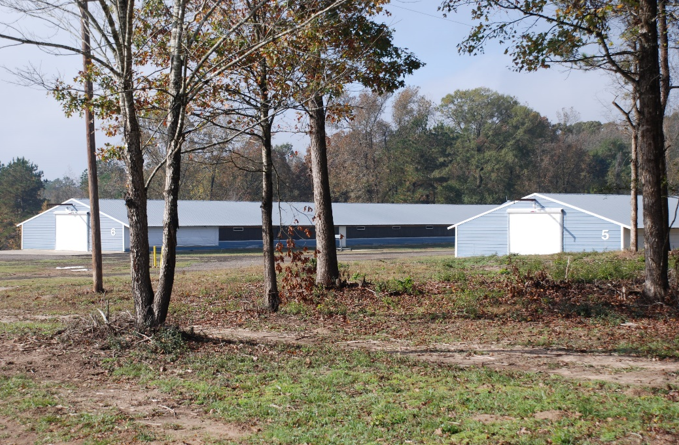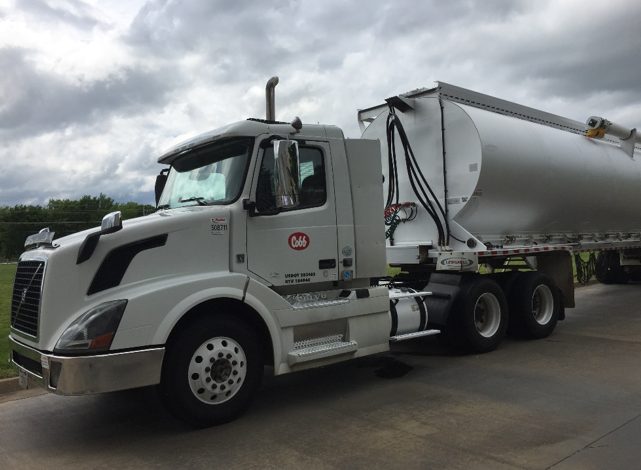



Preparing poultry houses for cold weather
Make sure that the farm is preparedAs the winter months approach it is important to make sure that the farm is prepared. Equipment failures can be devastating and result in massive losses. Winter storms can cause delays in supply deliveries. Freezing temperatures can create issues with water lines. Infrastructure issues can reduce flock performance and create biosecurity risks. Getting ready for winter involves creating an emergency plan, checking the house and equipment, and doing any necessary repairs.
Equipment Preparation
To begin, create a comprehensive farm plan that includes regular, scheduled, and preventative maintenance to prevent equipment failures. Replacement and spare parts should be restocked to prevent delays in repairs. An on-site, written logbook should be used to record regular checks (ex: generator testing), routine on-site repairs, and major maintenance concerns that need to be scheduled.
Major maintenance and mechanical repairs should be completed between flocks and in conjunction with cleaning to minimize biosecurity risks. Maintenance checks prior to winter are similar to pre-placement maintenance checks in that the producer prepares the chicken house to ensure safe comfortable rearing of birds. Whether rearing broilers or breeders, create a written plan and checklist of areas and items that must be verified for maintenance before entering the winter season.
All heaters should be cleaned and serviced prior to the arrival of winter temperatures. Check for signs of soot buildup on brooder canopies and yellow/orange flames. Soot is often an indication of potentially high levels of carbon monoxide.
Power failure during the winter months is not uncommon. Test the generator to ensure that it is working correctly to provide immediate backup power for the farm during an emergency. Generators should cycle under load once per month to ensure they are operational. Have an electrician or generator specialist conduct a review of the generator every 6 months. Test the alarms and alarm system to verify that audible alarms are functional. Confirm that all radio/automated alarms contact the correct person(s) when emergency conditions occur.
Charge the water system and check and repair any leaks or faulty regulators. Water can freeze inside of pipes leading to ruptured systems. So, if necessary, wrap or insulate pipes that will be exposed to below freezing temperatures. If a backup water source is available on the farm, ensure that it will be accessible in case the primary source is lost.
Infrastructure and systems
Inlets
Winter preparation should include a thorough inspection of the perimeter inlet system. Special attention should be made to the actuator/inlet motor and pulley system. Ensure all the cables are riding in the pulley system and all nylon strings are correctly adjusted. Make sure the nylon string, cable/metal rod tension is adjusted and that all the inlet guide pulleys are in the correct position. To accomplish this inspection, perimeter inlet system should be in the fully closed position.
This inspection should also include the tunnel door or curtain. A poorly sealing inlet curtain or door can be a significant source of leakage.
Once completed, a static pressure test can be performed to assess the level of house leakage. House tightness is critical for optimum perimeter inlet ventilation and heating energy use. With all inlets and doors at the fully closed position, turn on the equivalent of 1 cfm of fan capacity per square foot of floor area. A minimum of 37.5 Pa (0.15 inch water column) pressure is an indication of the absolute minimum requirement.
Keep in mind, a poor result in the pressure test could also be an indication of poor fan maintenance. Inspect all fan belts, tensioners and pulleys for wear. A blade rpm test using a tachometer can be conducted. A 15 % or more reduction from the manufacturers listed rpm would indicate a need for fan maintenance.
House sealing – doors and tunnel fans
All summer tunnel fans should be covered and sealed prior to winter. Leaking backdraft shutters can be easily sealed using a sheet of plastic. Ideally an insulated fan cover which can be tightly sealed over the fan is always the best option. Outside covers on cone fans provide draft elimination but have limited insulative properties.
All access doors, especially the large access doors at the front and rear of the house must be well sealed. As with tunnel fans, a leaking door can be sealed using a sheet of plastic placed over the outside of the door. This can be temporarily framed at the top and sides and sealed at the floor using some form of ballast, such as sandbags. Failure to properly cover and insulate doors and tunnel fans will substantially increase fuel costs and create an uneven temperature environment for your winter flock.
Temperature and relative humidity sensor check:
For this check, use a high accuracy food thermometer and a half filled 20 L (5 gal) bucket of water. At each sensor, measure the water temperature with a high-accuracy thermometer. With someone at the controller to monitor the temperature readings, place the tip of the house temperature sensor in the bucket of water. If there is a variance of 0.5 °C (1 °F) from the high-accuracy thermometer, recalibrate the sensor.
Check all the sensors in the house, including the outside sensor. Make sure the outside sensor is shielded from solar radiation that can cause inaccurate readings.
If a humidity sensor is installed, this should also be checked for accuracy. Keep in mind relative humidity sensors can be widely inaccurate and are not recommended to be used to run a ventilation system.
Pre-heating to ensure the entire heating system is working
Run the heating system for 48 hours to evaluate the system. Measure concrete and litter temperatures. All concrete floors should reach and maintain 28 °C (82 °F). Ensure the circulation fans are at the correct angles and operational during the heating process.
Ventilation system checks:
Inspect all fan belts, fan pulleys, fan motors and louvers for wear. Replace any worn belts and pulleys. If a new belt rides low in the pulley it’s a sign the pulley is worn and needs replacing. It is not uncommon for the fans operating in the first stages of ventilation to have far more wear than fans that only operate during full ventilation.
External environment

Visually verify the conditions of the house (ex: cool cell pads, security of doors and drainage equipment, security of perimeter fence, vegetation and vermin control boxes) to ensure that biosecurity and premise security are functional.
Alarms and Emergency Planning
Issues may arise that require emergency responses. Minor events (power or equipment failures) and major events (severe weather, flooding, wind damage) can occur that can cause damage to housing and limit or prevent access to necessary resources including feed and water. At a minimum, poultry operations should have a written plan for emergency responses that includes standard operating procedures (SOPs) to assess and repair structural damage, loss of power, loss of water, notifiable disease presence (on the farm or in the regional area), catastrophic issues causing the inability to deliver feed, and emergency depopulation.

Alarm systems should be used to constantly monitor the chicken house environment and housing systems (temperature, water availability, electricity, etc.) that are critical to supply the daily needs of the flock. Ideally, backup systems such as generators for electricity and a secondary water supply should be present on-site and should be regularly monitored. Contact information for emergency response services and staff responsible for addressing emergencies should be posted in a place where the information is easily accessible.
Conclusions
Winter conditions make maintenance and repair of equipment much more challenging. Prepare for the coldest temperatures of winter by conducting a thorough review of the poultry house environment and repair or replace worn parts, nonfunctional equipment, and any air leaks in the house. The maintenance list provided in this article is not comprehensive because every farm is different. However, a proactive approach to winter farm preparation can prevent disastrous losses.









